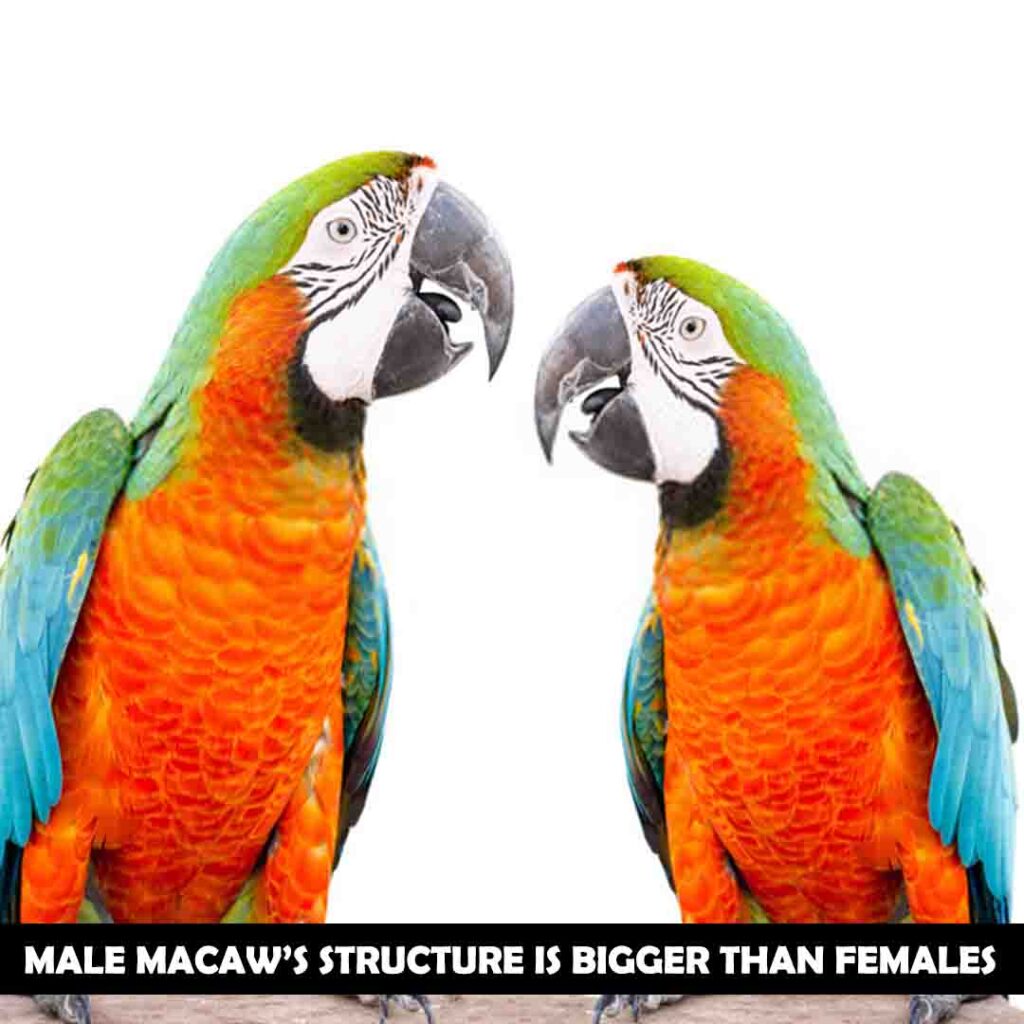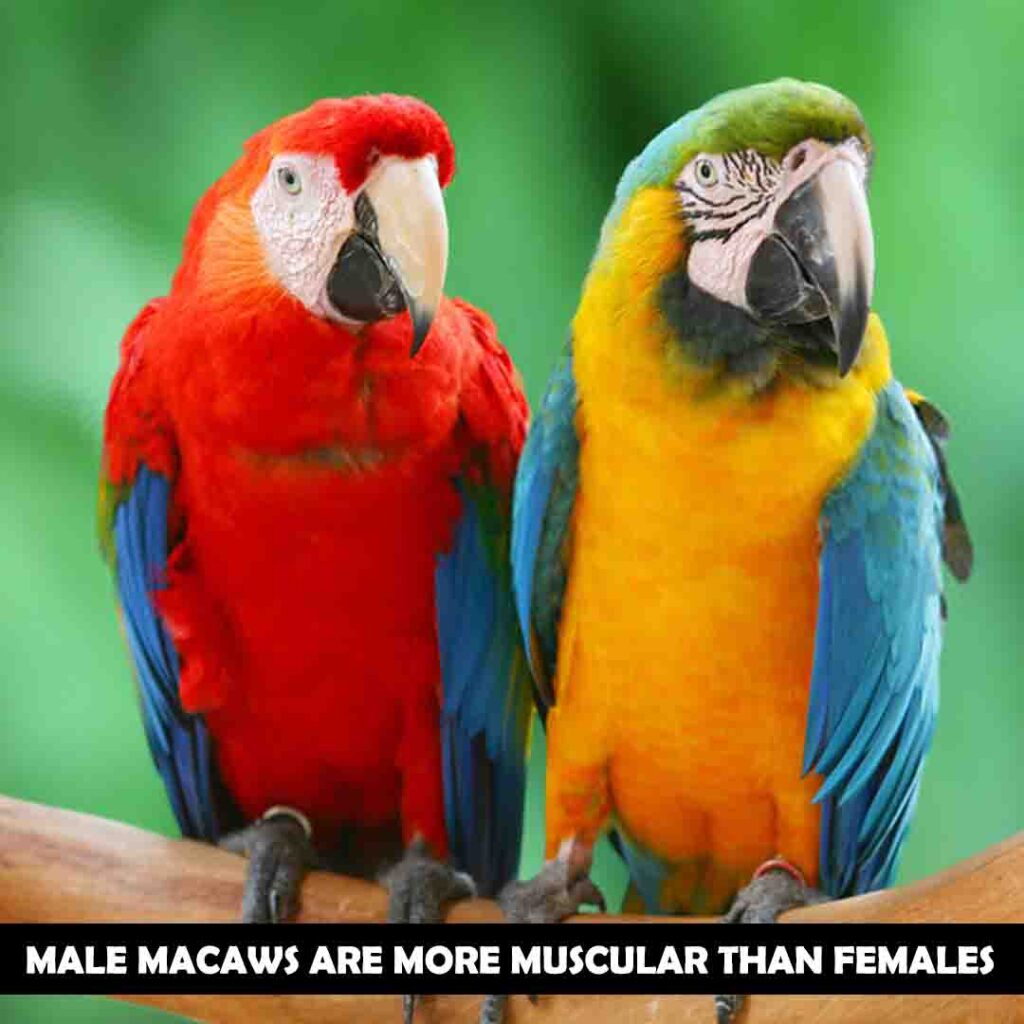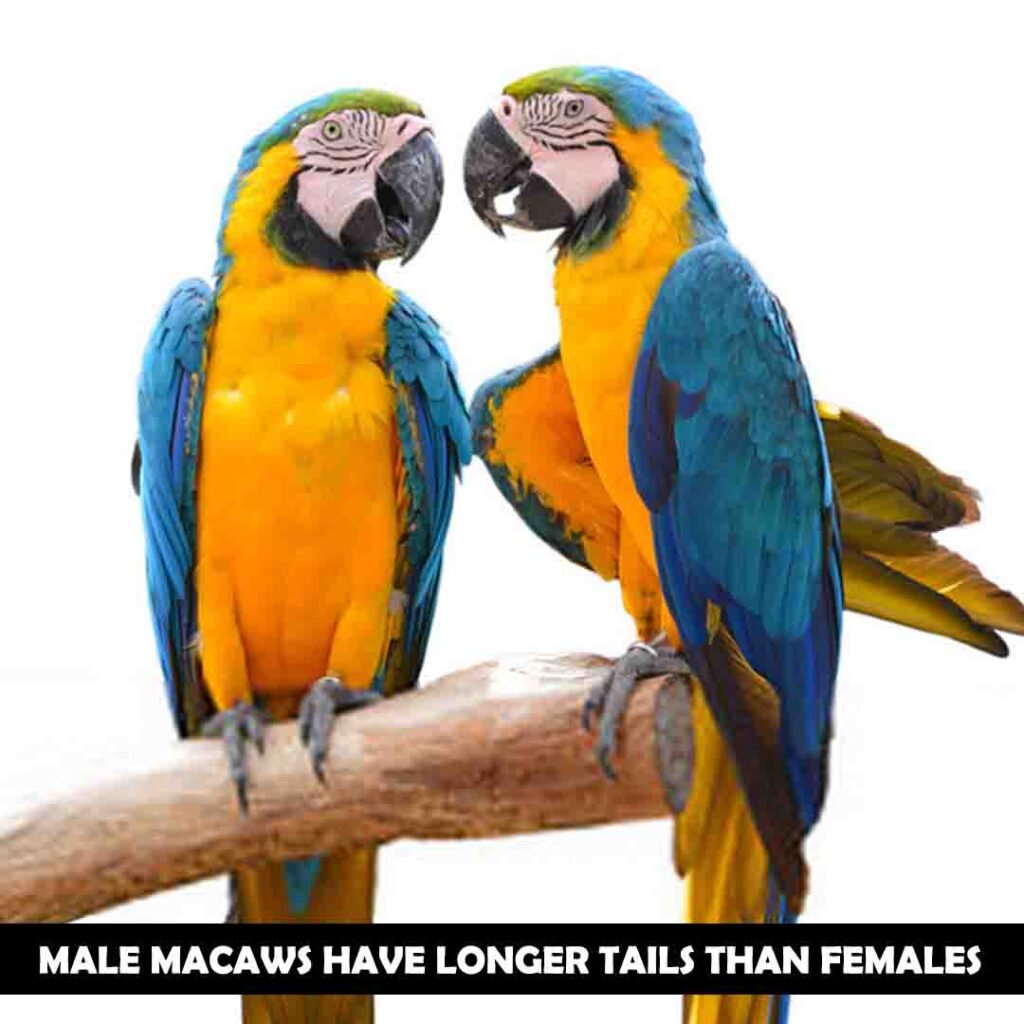Last Updated on February 17, 2022
Male and female macaws are beautiful and look alike. Let’s see whether the males are bigger or smaller than the females. Is there any difference between the two genders? How can you identify the male and female macaws?
Male macaws are slightly bigger than females because males have larger heads than females. Tail feathers and beaks of male macaws are longer than the females. Both look alike, but larger heads, wider beaks, and long feather tails show their power to defend females like guardians.
In this article, you can learn why males are more significant than females? How do their long feathers help them to protect and attract females? Can you say male macaws are more prominent than females? Let’s start.
Males Macaws Are Bigger Than Female Macaws
Male macaws are more prominent than females because they are strong and protect the females and their chicks during breeding. Knowing the sex of macaw is not necessary because both male and female macaws are friendly and intelligent.
But if you want to breed the macaw or do not want them to produce, you must know the sex of your macaw. Identifying the male and female macaw is quite challenging, but the visual appearance can tell you basic information.
Only an experienced person can judge that male’s head, beak, and feathers are longer than a female’s, so they look more prominent and more significant than a female’s.

During breeding, the role of the male macaw is more significant than the female. As they get sexual maturity, they find mates. Males have beautiful and prominent feathers that are glossy and shinier.
A sexually and socially mature male macaw is noisier, more vocalized, and more outgoing, while females remain docile and obedient.
They attract females by producing mating calls, vocalizations, and having flights to show their feathers. They compete with other males for the selection of mates. Once they select the mates, they remain together and protect their females. They become territorial and find the mating sites.
Females have an extra duty to lay eggs. Females remain possessive during egg-laying, and males stay near her to protect her and the eggs. They become aggressive if anyone tries to disturb their eggs. The males go out and search for some new feed for the macaws.
During incubation of 24-28 days, the male macaws stay together with the female macaws, going out only for feeding. They bring a more fat and calcium diet to the females who incubate the eggs. The Male arranges the food for the female also.
The mates become more responsible after hatching and raising their chicks together. Both bring food and feed their chicks one by one.
Why are male macaws bigger than females?
Macaws are beautiful and intelligent and perform several responsibilities throughout their different life stages. Male and females of many species are similar, but the males are slightly bigger than the females in a few macaws because of the following aspects.
- Males have to compete for the females.
- They find the territory and compatible mates.
- Males have to defend and protect their mate and their chicks.
- The males equally participate in raising their chicks and finding food for chicks and their mates.
Besides that, the males have some visual significance over the females.
Heads are bigger
Male macaws look prominent in protecting, defending, and arranging the food for the chicks and competing with the other males to select mates.

Females and males have a similar appearance, but if you observe, males’ heads are a little more oversized than female macaws. It seems like the males are more muscular and have more power than the females.
Bobbing of the head and regurgitating are the signs of appealing to the females for mating. The males with slightly larger heads look prominent when they shake their heads, and females can recognize them soon. When they are hormonal, the bobbing and fluffing of facial feathers are more common actions of male macaws.
Beaks are wide and long.
Male macaws have broader and longer beaks, while female macaws have narrower and shorter beaks than females. Beaks play an essential role in finding food, grasping the perches during flights, making nests, defending from predators, biting, foraging, cracking hard shells of nuts, playing, and breeding.
The vast and long beaks of male macaws are more powerful than females. The main reason behind this is the strength of male macaws used for their defense.
Tail feathers are long.
Tail feathers help macaws in taking smooth and long flights. They can help them stay balanced and controlled in the air during flight. Male macaws have longer tail feathers than females.
Males attract females by making flights to show their beautiful wings. The males with more smooth and long flights are considered more solid and robust. A macaw can twist and turn during flights with the help of tail feathers.

So, male macaws have the benefits of having long tail feathers because they can make different flights and can defend themselves from predators during flights.
Are male and female baby macaws similar?
After hatching, the baby macaws are blind and without feathers. It is tough to know their gender. But an experienced owner who has been involved in macaws handling can tell which one is the male.
Male chicks are more vocalized and remain more active than females. It is not the same in all species of macaws. Variations depend on the type of macaw. In blue and gold macaw male baby has a slightly bigger and round head and wide beak. That’s why they seem to be more significant a lit bit from female babies.
However, the difference between male and female baby macaws may be due to their future dominance, defensive and protective nature towards their mates and chicks.
Conclusion
The visual appearance of the male and female macaws is similar. Only the experienced pet owner can observe the difference. Males are slightly bigger than females because they have to compete with the other males for their mates, find the territories, protect the females and chicks from the others as a guard, and feed the chicks after hatching. In addition, they seem to be slightly bigger than the females as they have bigger heads, wider beaks, and long-tail feathers.
If you enjoyed reading this article, you may also like to read about:
Bilal is an aviculturist who loves to write in free time. His personal experience with bird care and breeding enables him to share valuable tips. So far, he has contributed more than 100 blogs to this site.
His goal is to promote bird-keeping and save endangered species.
